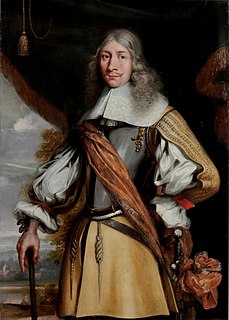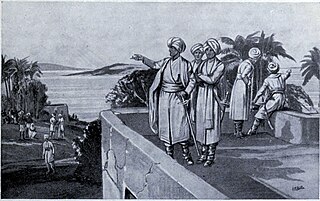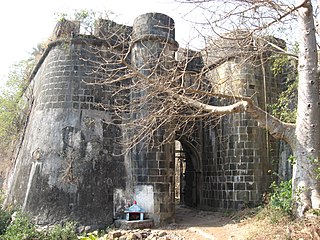Related Research Articles
Sion is a neighbourhood of Mumbai. In the 17th century the village formed the boundary between Mumbai and Salsette Island. The British named it marking the end of the city. The name remained even after Mumbai was joined to the Salsette and extended up to Mulund. One of the local historical places in Sion is a hilltop garden commonly known as Sion Fort or Sheevon Killa in the Marathi language.
The following is a timeline of the growth of Mumbai's population over the last four centuries:

Mahim is a neighbourhood in Mumbai, India. The Mahim railway station is in the Mahim area, on the Mumbai suburban railway on the Western Railway line. Mahim is diverse and has a church, mosque and fire-temple existing within a few meters of each other.
Parel is a neighbourhood of Mumbai. Parel used to have a number of textile mills, but these have been replaced by commercial office space development.

Worli is a locality in South Mumbai, Maharashtra, India. It is one of the four peninsulas of Mumbai while the other being Colaba, Bandra and Malabar Hill. The sea connects it with Bandra via the Bandra-Worli Sea Link. Historic spellings include Warli, Worlee, Varli, and Varel. Originally Worli was a separate island, one of the Seven Islands of Bombay which were ceded by the Portuguese to England in 1661; it was linked up with the other islands in the 19th century.

Cunha is a Galician and Portuguese surname of toponymic origin, documented since the 13th century.

Vasai in Maharashtri Konkani and Marathi pronunciation: [ʋəsəi],, is a historical place and City near Mumbai (Bombay)'s western suburbs, located in Palghar district which was partitioned from the Thane district in 2014. It also forms a part of Vasai-Virar twin cities in the Konkan division of Maharashtra, India.

Fort Vasai is a ruined fort of the town of Vasai (Bassein), Maharashtra, India. The structure was formally christened as the Fort of St. Sebastian in the Indo-Portuguese era. The fort is a monument of national importance and is protected by the Archaeological Survey of India.

Castella de Aguada, also known as the Bandra Fort, is a fort located in Bandra, Mumbai. "Castella" is a misspelling for Portuguese "Castelo" (castle), although it seems its Portuguese builders actually called it Forte de Bandorá. It is located at Land's End in Bandra. It was built by the Portuguese in 1640 as a watchtower overlooking Mahim Bay, the Arabian Sea and the southern island of Mahim. The strategic value of the fort was enhanced in 1661 after the Portuguese ceded the seven islands of Bombay that lay to the immediate south of Bandra to the English. The name indicates its origin as a place where fresh water was available in the form of a fountain ("Aguada") for Portuguese ships cruising the coasts in the initial period of Portuguese presence. The fort lies over several levels, from sea level to an altitude of 24 metres (79 ft). Castella de Aguada has been featured in several Hindi films, such as Dil Chahta Hai and Buddha Mil Gaya.

Bhuleshwar is a neighbourhood in Mumbai. It is situated in South Mumbai and to the north of the Fort area. It is known for being home to over 100 temples including Mumba Devi Temple of Mumbai, the patron goddess of the city of Mumbai and Swaminarayan Mandir. The area is also known for the Bhuleshwar Market for fruit and vegetable and is surrounded a number of old markets, like the Crawford Market for fruits and vegetables, Mangaldas Market for silk and cloth, Zaveri Bazaar, the famous jewellery and diamond market and Chor Bazaar, a noted market for antiques and furniture.

Rijcklof Volckertsz. van Goens was the Governor of Zeylan and Governor-General of the Dutch East Indies. He was the Governor of Zeylan from 12 May 1660 to 1661, then in 1663 and finally from 19 November 1664 to 1675 during the Dutch period in Ceylon. He was also served as Council Member of India during 1679. Van Goens’ managed to monopolize the cinnamon trade, get hold of the Malabar pepper and drive away the Portuguese from Ceylon and the Coromandel Coast for the VOC.

Bombay, also called Bom Baim in Indo-Portuguese creole, is the financial and commercial capital of India and one of the most populous cities in the world. It's also the cosmopolitan city centre of the Greater Bombay Metropolitan Area, and the cultural base of the Bollywood film industry. At the time of arrival of the Portuguese Armadas, Bombay city was an archipelago of seven islands. Between the third century BCE and 1348, the islands came under the control of successive Hindu dynasties. The Delhi Sultanate had been ruling the area along with Chaul, New Bombay (Thana)& Damaon, with the administrative centre in Bassein (Vasai) since the raids of Malik Kafur in the Konkan region and across the Indian subcontinent. This territory in North Konkan along with the Bombay islands were later taken over by the Sultan of Guzerat from 1391 to 1534, when he had declared the end of suzerainty to Delhi after the Timurid invasion of it. Growing apprehensive of the power of the Moghul emperor Humayun, Sultan Bahadur Shah of Gujarat was obliged to sign the Treaty of Bassein on 23 December 1534, according to which, the seven islands of Bombay, Fort San Sebastian of Bassein in strategic town of Bassein (Vasai), and its dependencies were offered to the Portuguese East Indies, the territories were only later officially surrendered on 25 October 1535, by the Sultan of Guzerat.
Gerson da Cunha was an Indian advertising professional who was also a stage and film actor, social worker, and author. He headed the Indian market communications agency Lintas and also worked for J. Walter Thompson, and Hindustan Lever in a career spanning 25 years. He worked with UNICEF in Brazil and was awarded the Order of Rio Branco by the government of Brazil in 2018 for his services to that country.

Humphrey Cooke, known in Portuguese chronicles as Inofre Coque, was the first English governor of the Bombay Presidency during the rule of the Honourable East India Company.
José Gerson da Cunha was a Goan physician who achieved international renown as an orientalist, historian, linguist and numismatist.
Chaukalshi is an ethnic community of Maharashtra and Goa.
The Church of Our Lady of Health, Cavel is a Roman Catholic church under the Archdiocese of Bombay. It was built by the Portuguese in 1794, when it was a chapel under the Padroado jurisdiction.

The military history of Bassein encompasses the period from 1526, when the Portuguese established their first factory at Bassein, until 1818, when Bassein lost its strategic importance following the defeat of the Marathas by the British.

Jayaba Mukne or Jaideoraoji Mukne also known as Paupera and Jagappa Nayak Mukne was first Koli ruler of Jawhar State. He also spelled as Jayaba Mukne, Jayaba Mookna, Jayab Mookney, Joya Mookney, Jayab Mukne, Jayaba Mukna. He founded the Jawhar State and Mukne Dynasty in 1306 which ruled for seven hundred years till 1947.
References
- ↑ Cunha, Joseph Gerson Da; Cunha, Joseph Gerson (1993). The Origin of Bombay. Asian Educational Services. p. 96. ISBN 9788120608153.
- ↑ "History of Mumbai | Portuguese foundation in Bombay | Event view". www.xtimeline.com. Archived from the original on 9 February 2013. Retrieved 27 January 2022.